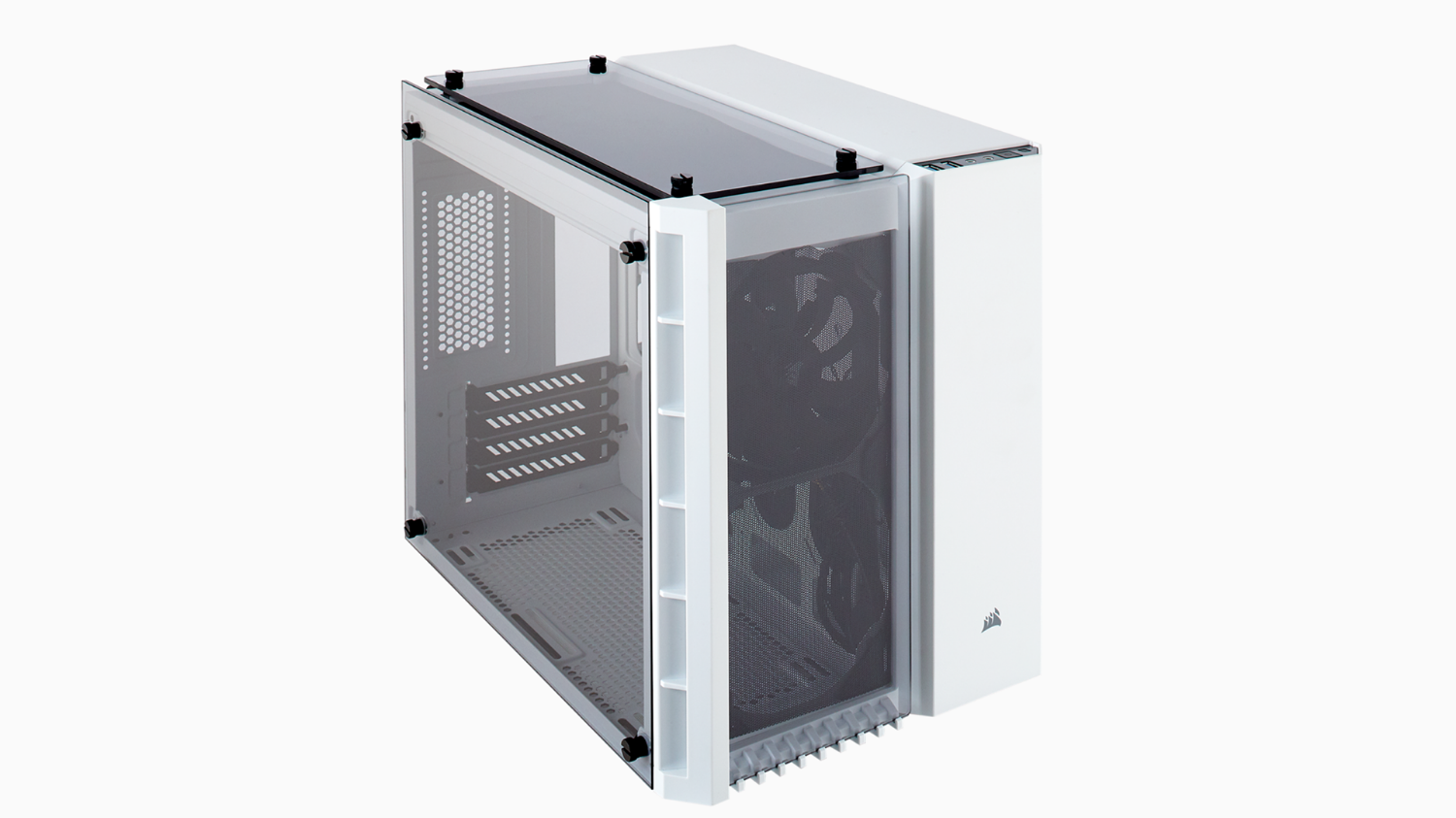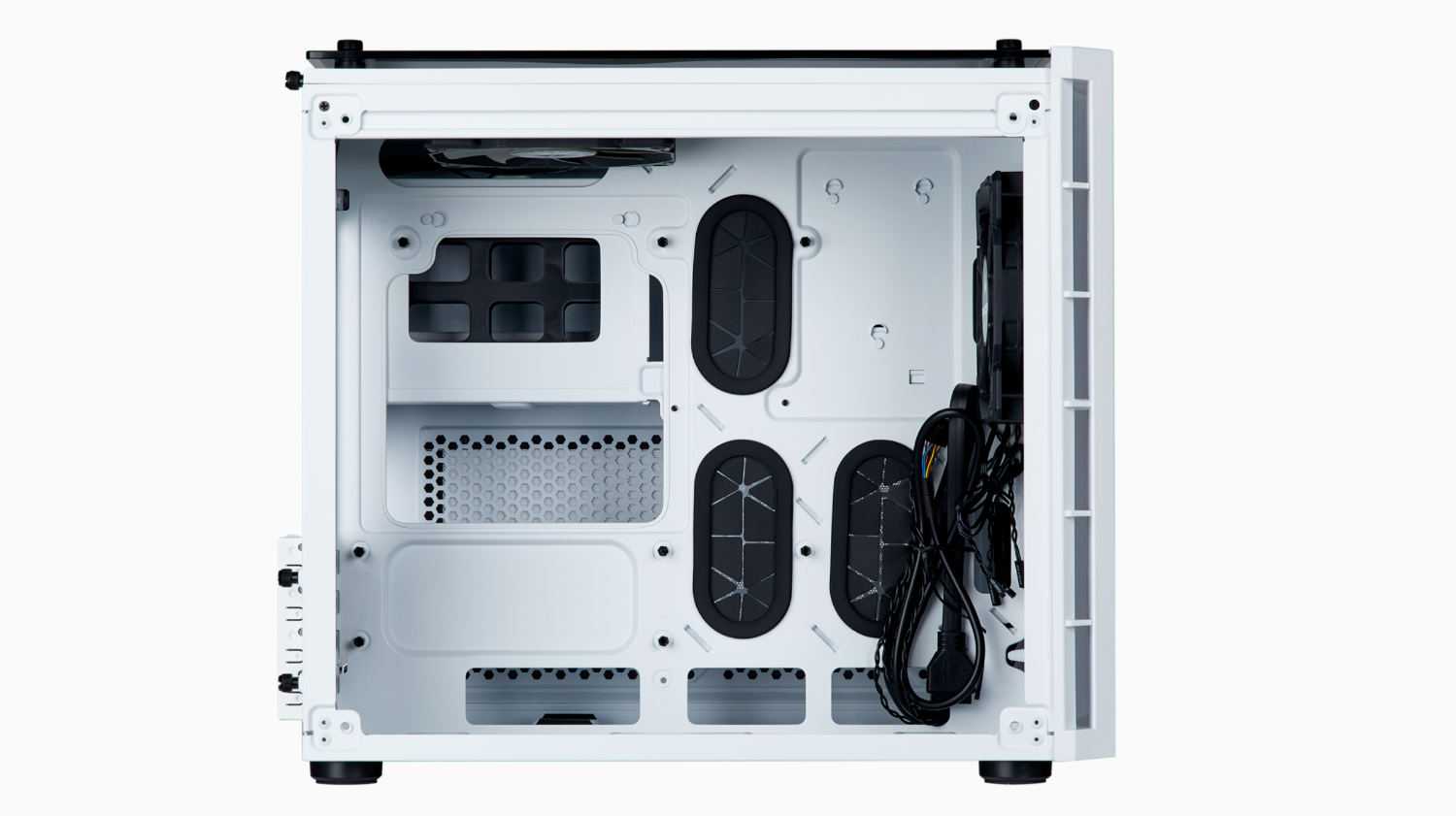Get $25 Off Corsair's Tempered-Glass Micro ATX Crystal 280X Case
We liked Corsair's Crystal 280X Micro-ATX casewhen we tested the black version with RGB fans last year. And I personally liked it so much that I bought one and built a new AMD Ryzen 2000 system in it, and it's been serving me well ever since. Newegg has the white model of this case, without RGB fans, on sale for $79.99 after a $15 mail-in rebate. That's $40 off the list price and -- RGB absence aside, which many will see as a positive -- it's quite the case for a penny under $95.
- Get the Corsair Crystal 280X (CC-9011136-WW) for $95 after $15 MIR
So long as you're down for the more compact Micro-ATX form factor (which means you'll lose some expansion card slots), there's a lot to like about the 280X. Its dual-chambered design means you can hide your power supply and drives behind the motherboard for a very clean build, and our testing showed it to be very quiet, thanks in part to its trio of tempered-glass panels. I can personally attest to this as I write this with the case just a couple of feet to the right of me on my desk.
The filtration system is also very good, although thermal performance isn't stellar thanks in large part to the glass panel up front. Given that, you'll almost certainly want to add to the pair of black fans (one in the front and one up top) that ships with this sale model, especially if you plan to load this case up with lots of high-powered components. I have four fans in my system, with a 1080 Ti and a 240mm CPU radiator, and temps stick to very reasonable levels, even when I'm rendering video or fragging demons in Doom.
For more savings, check out our list of best Amazon Prime Day deals and best pc hardware deals overall as well as dedicated lists of current sales on ssds, cpus, gpus and gaming laptops.
Photo Credits: Corsair
Get Tom's Hardware's best news and in-depth reviews, straight to your inbox.
After a rough start with the Mattel Aquarius as a child, Matt built his first PC in the late 1990s and ventured into mild PC modding in the early 2000s. He’s spent the last 15 years covering emerging technology for Smithsonian, Popular Science, and Consumer Reports, while testing components and PCs for Computer Shopper, PCMag and Digital Trends.


